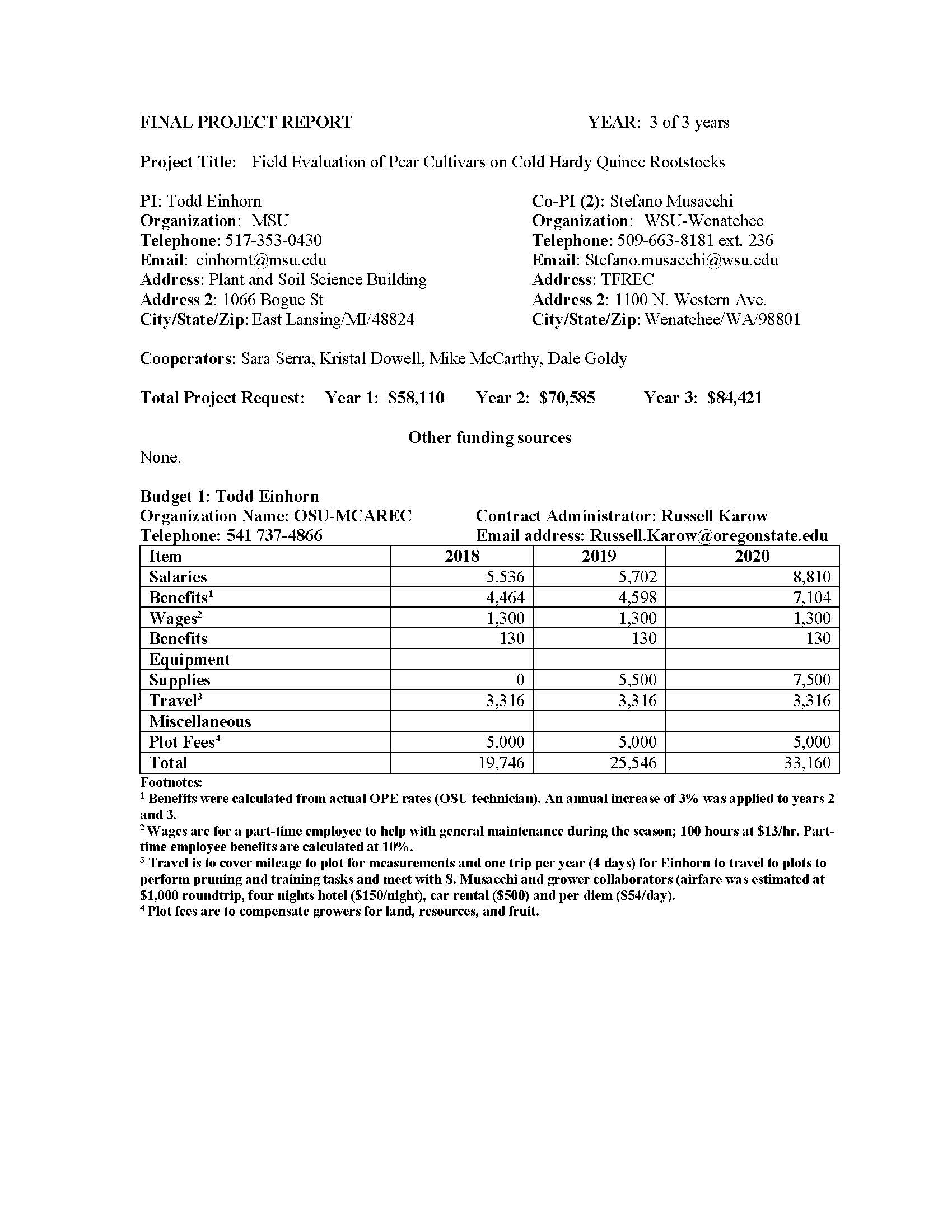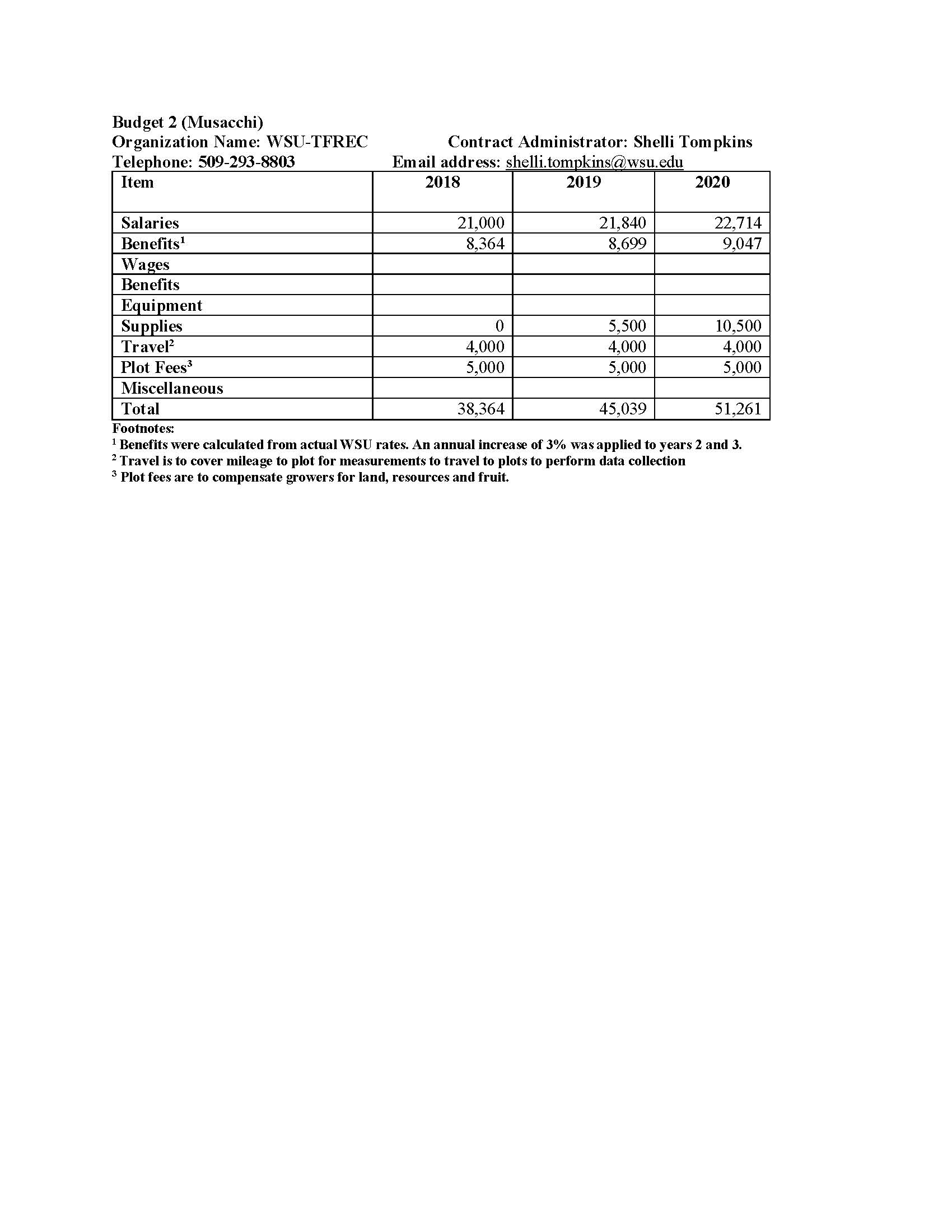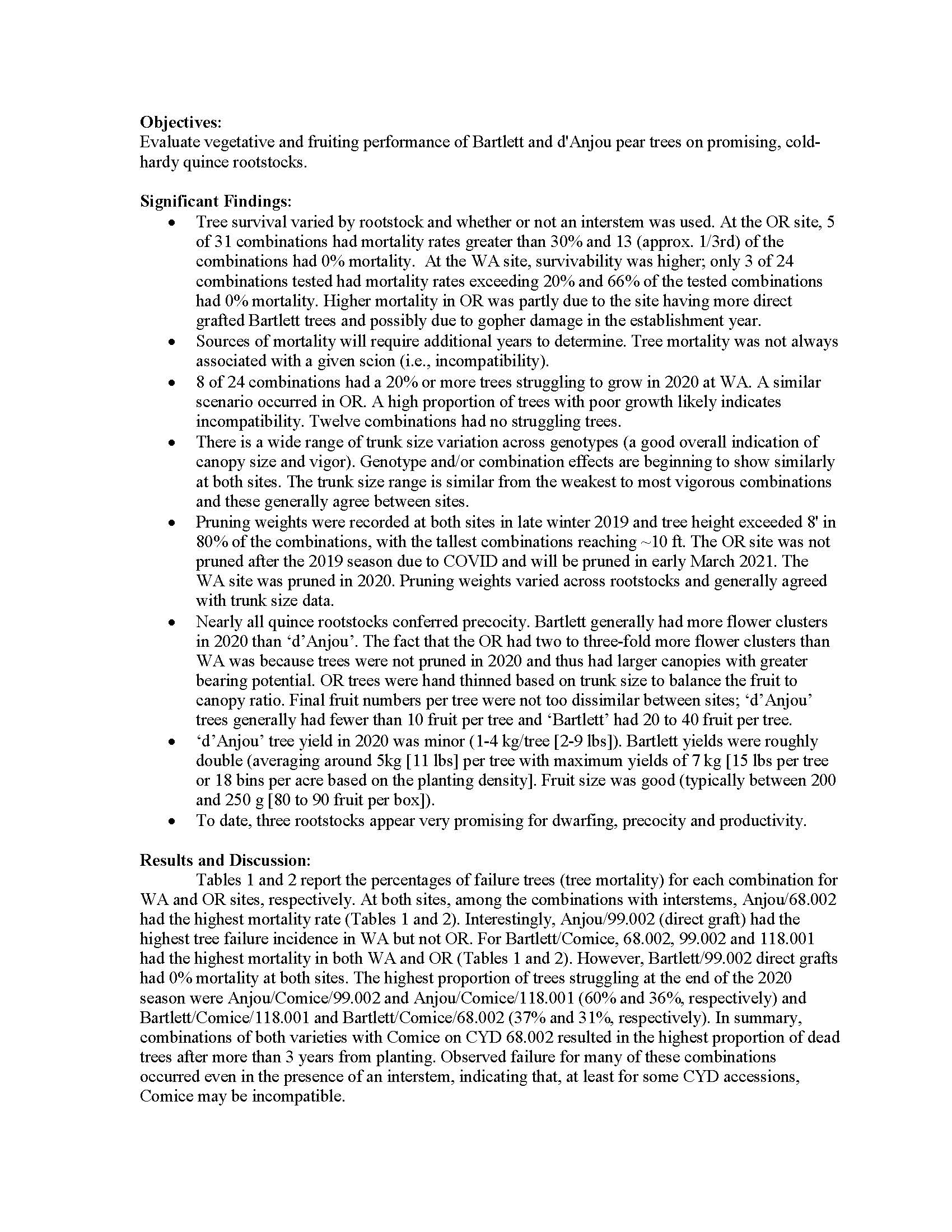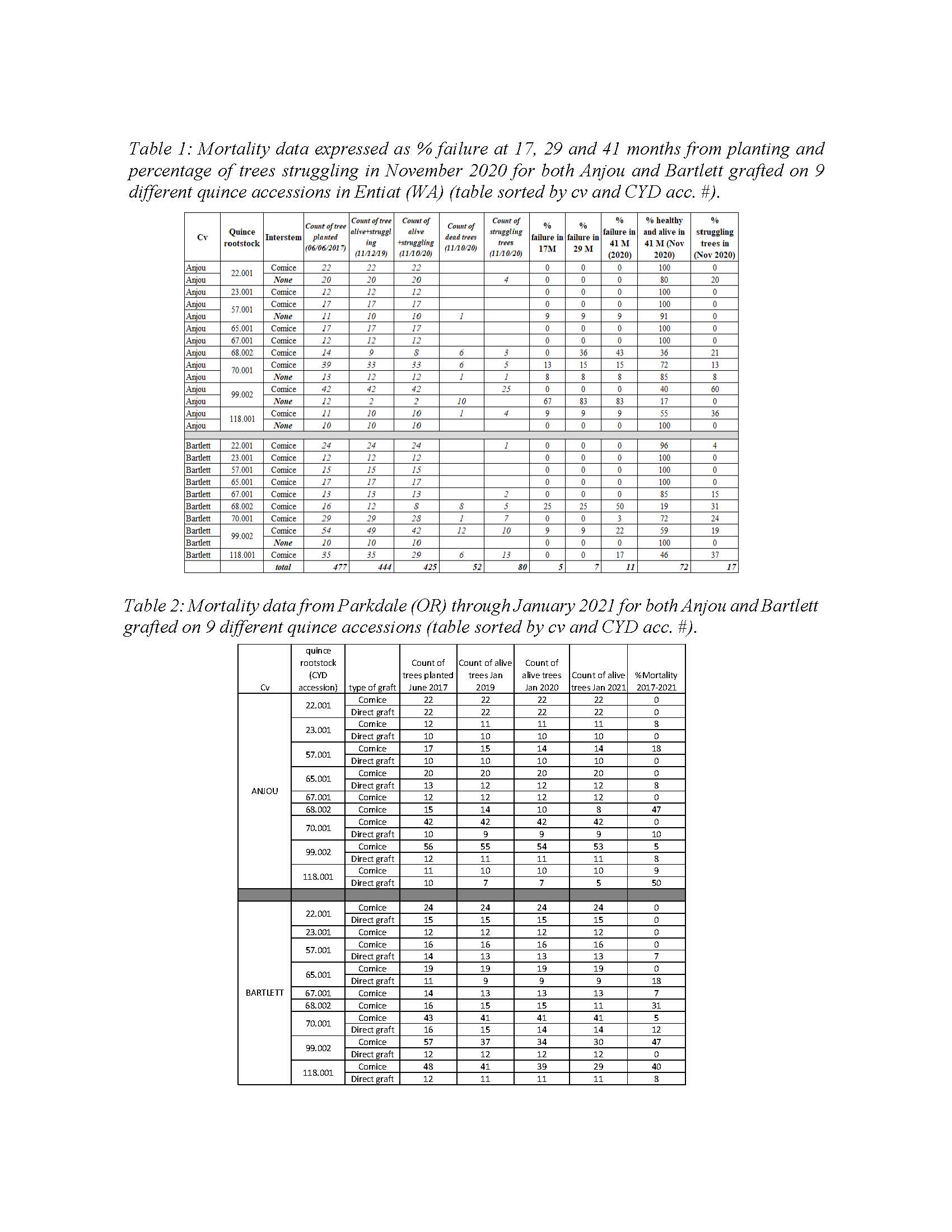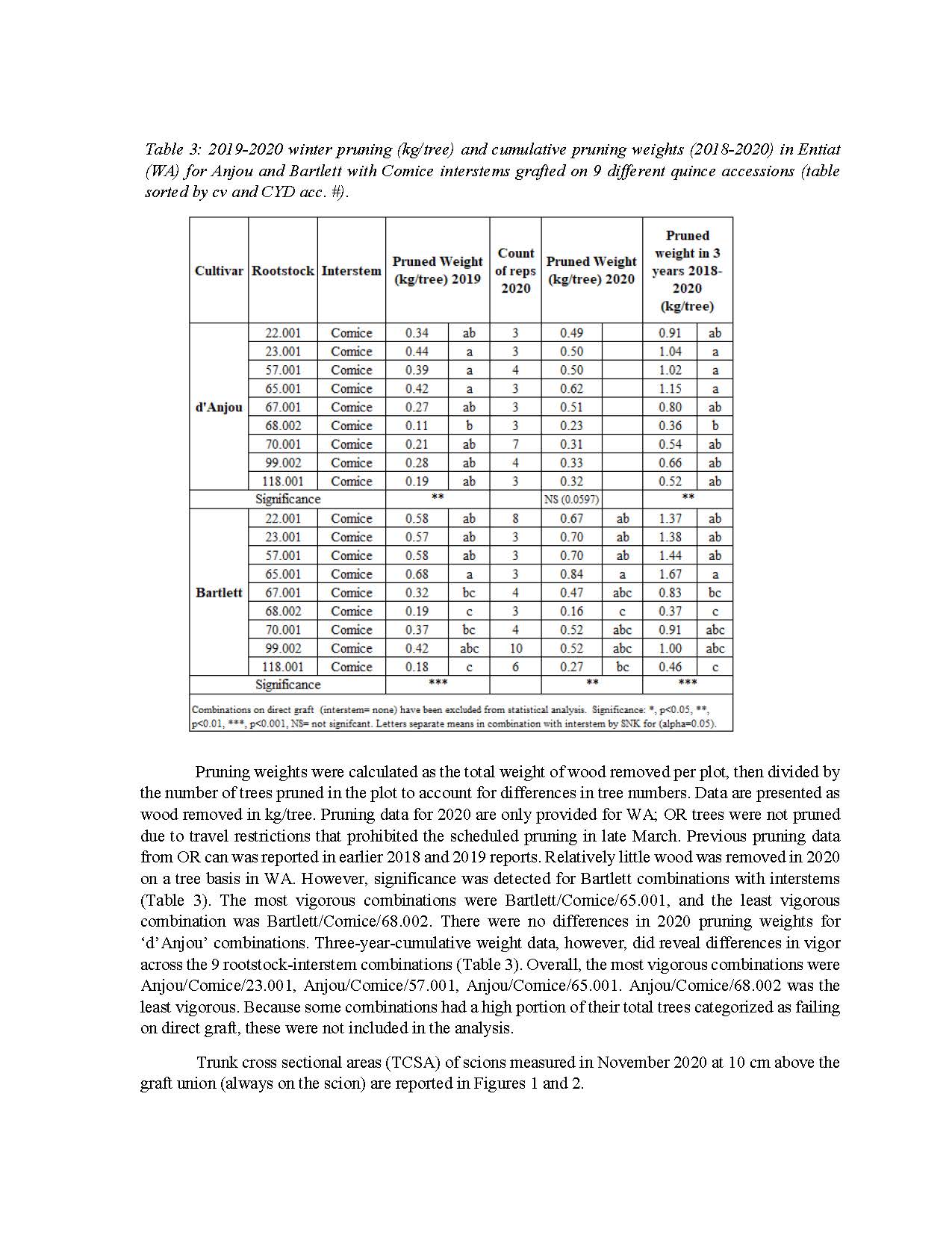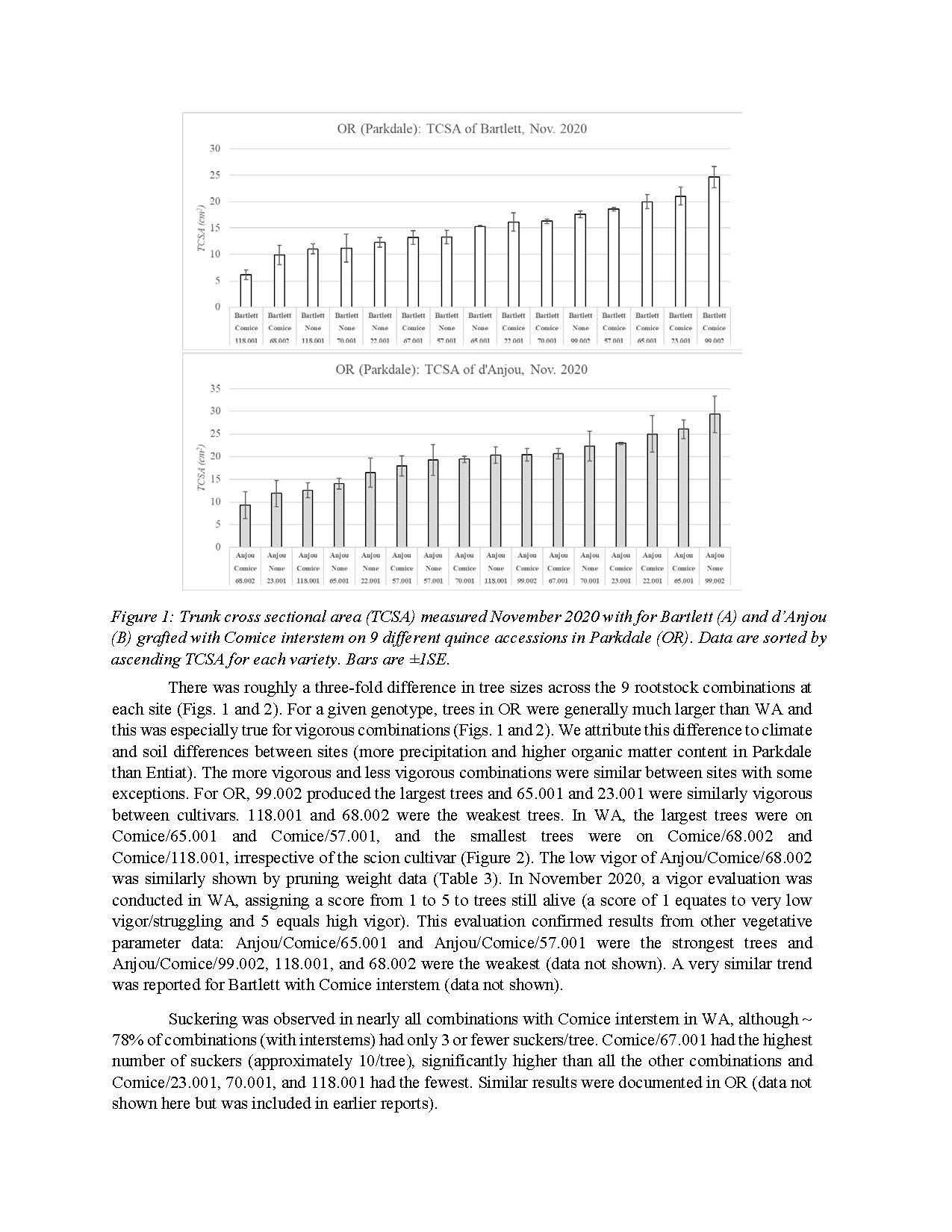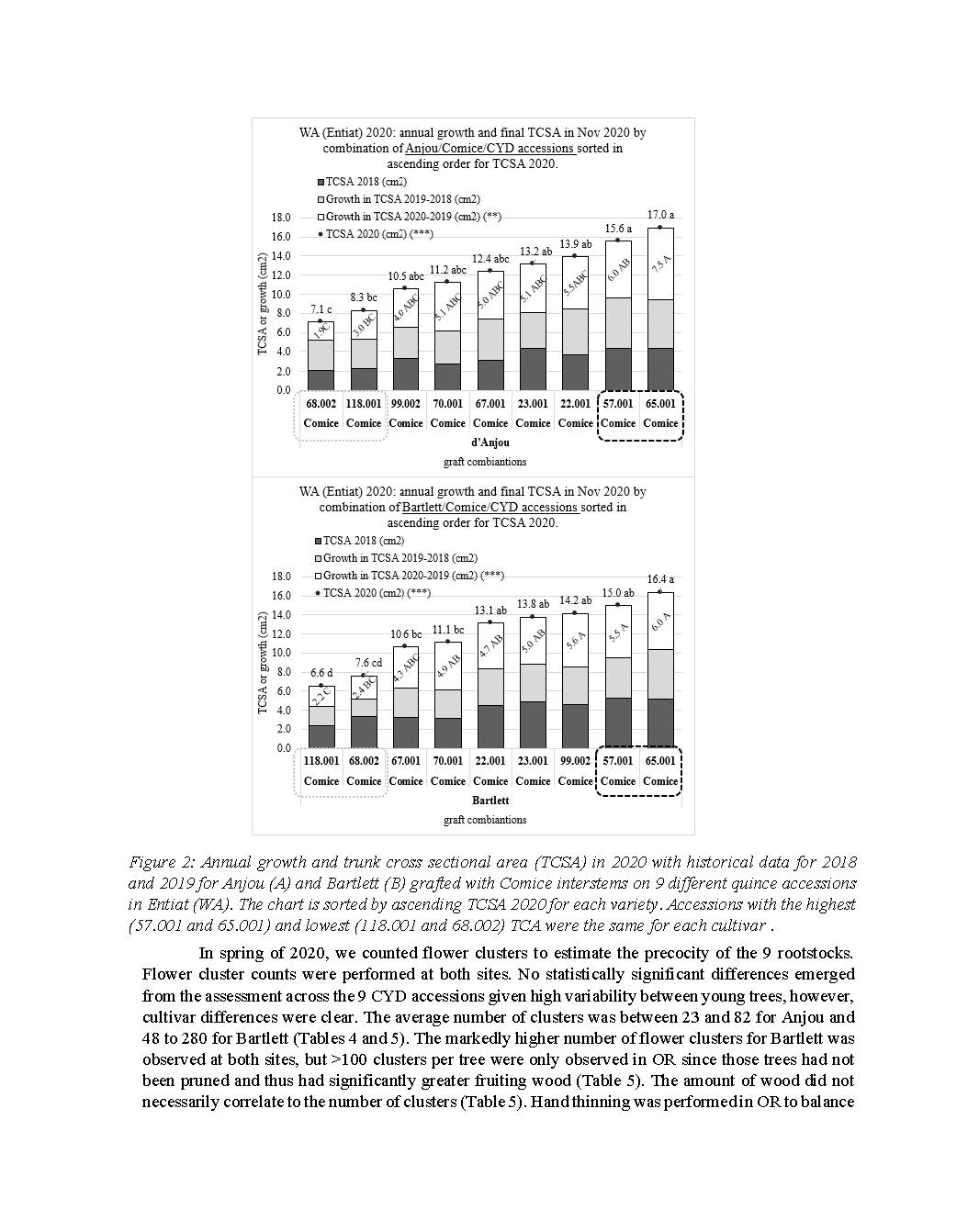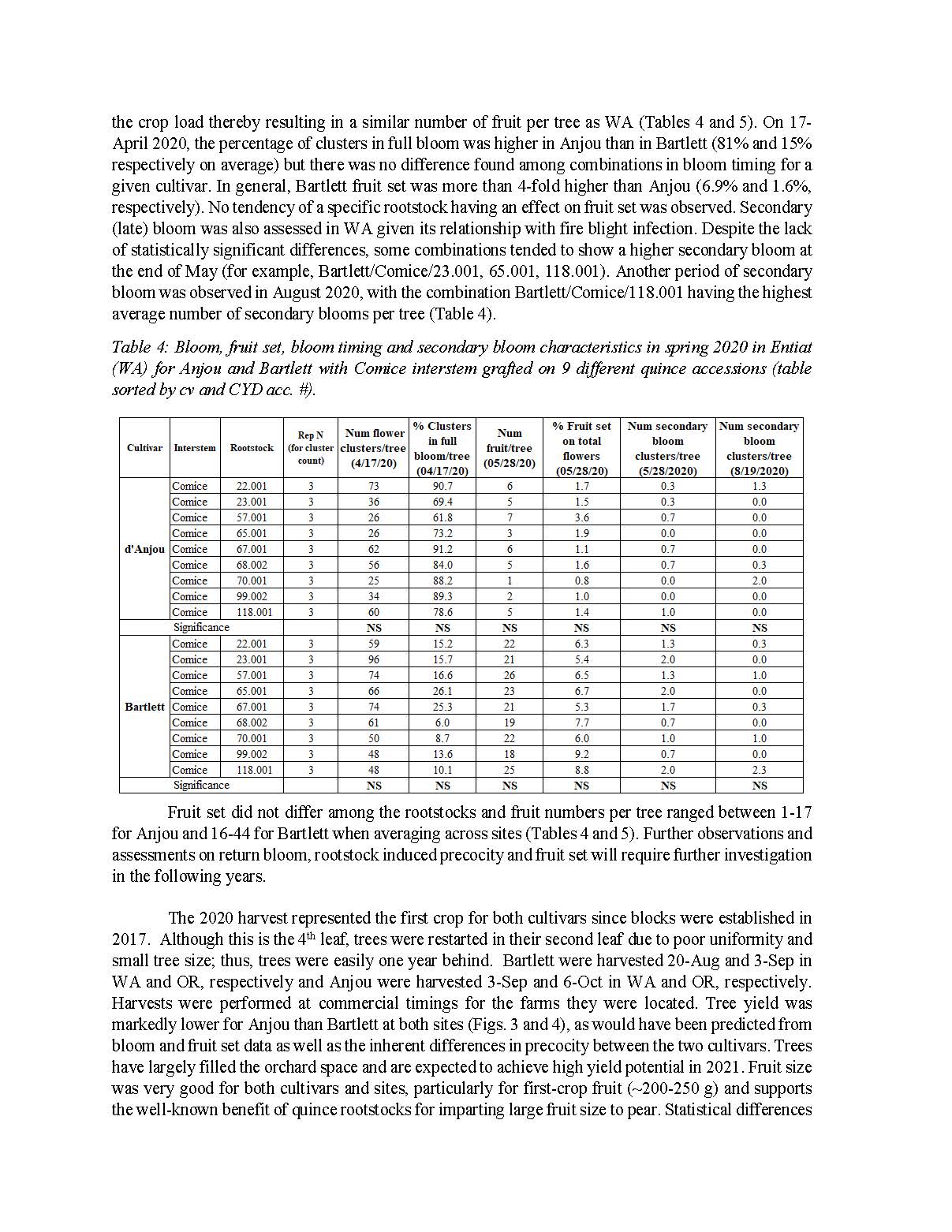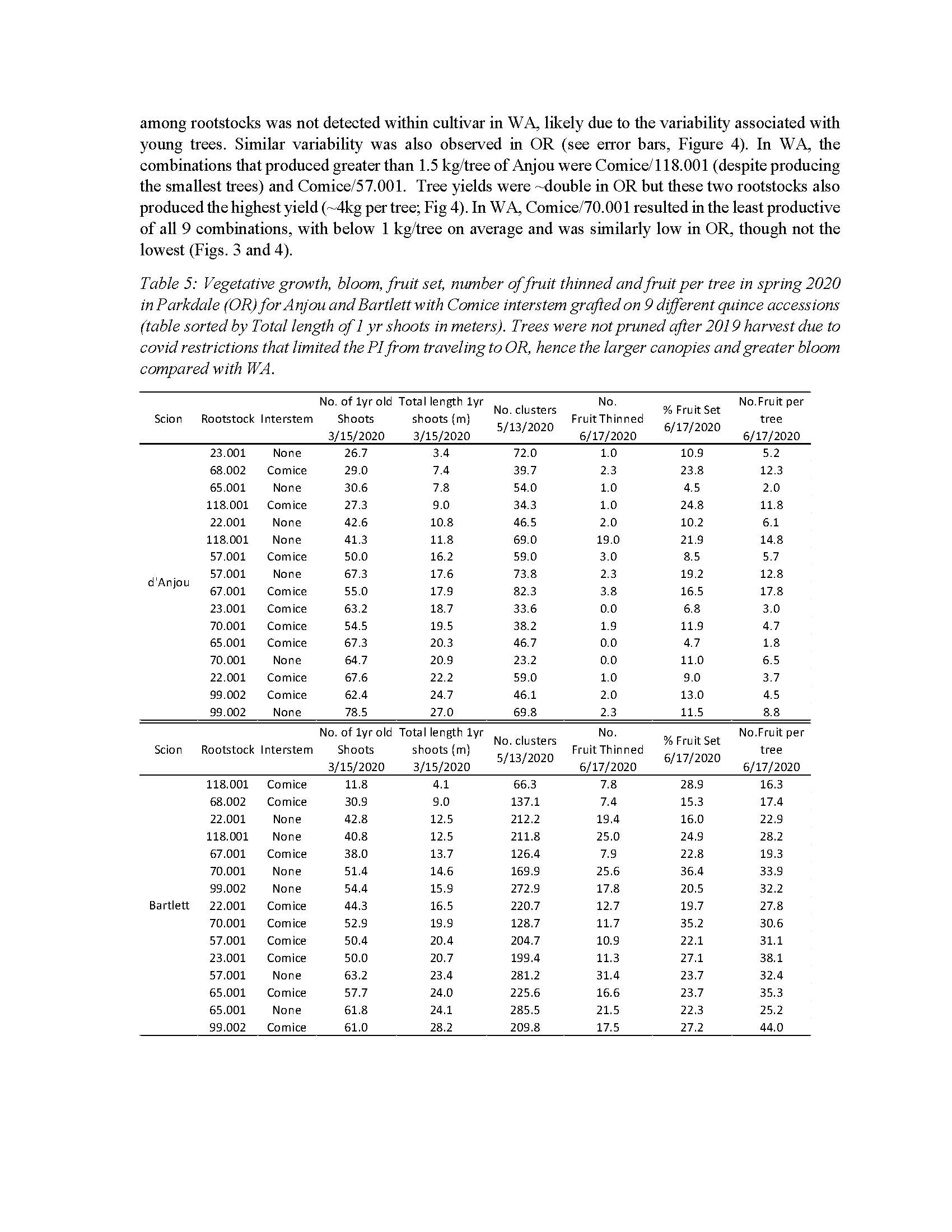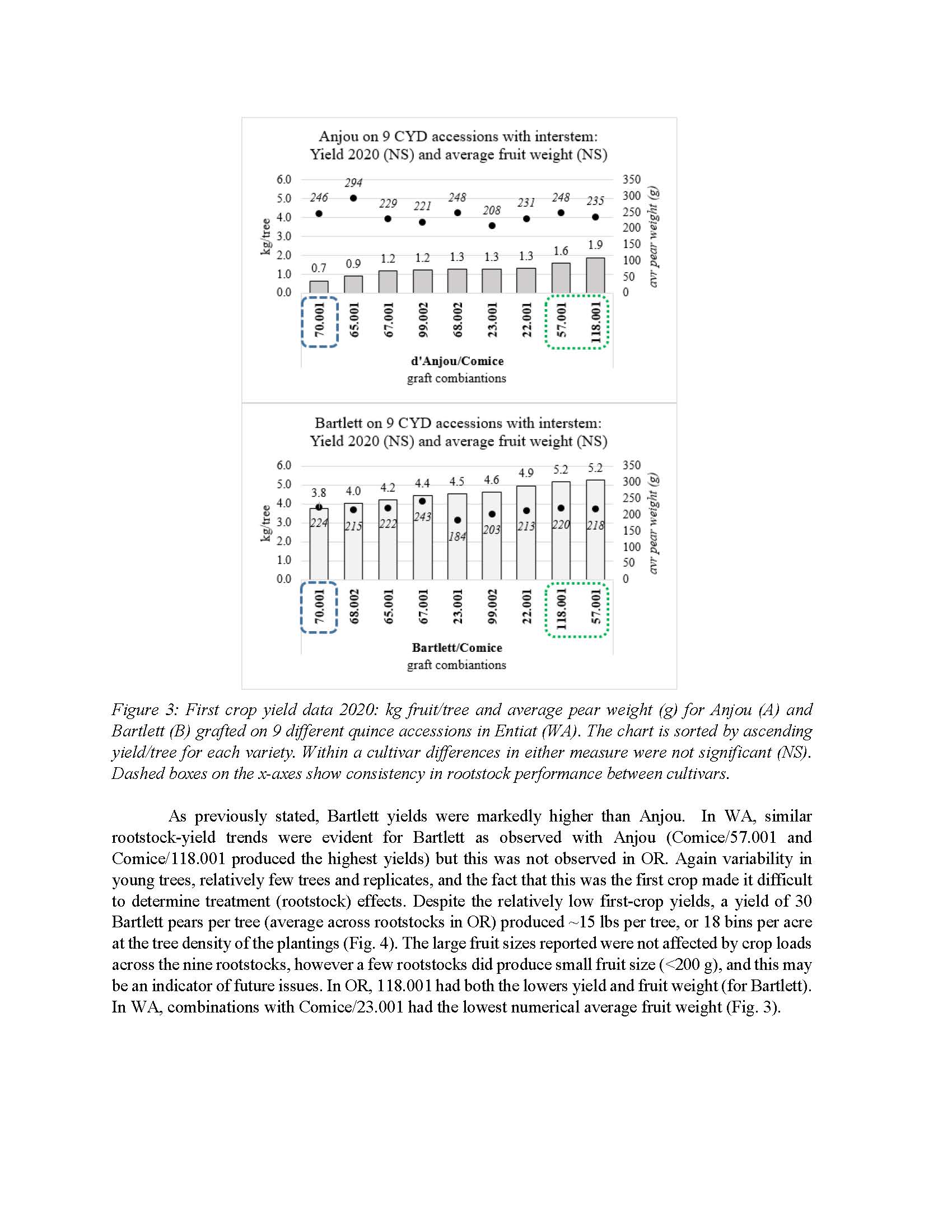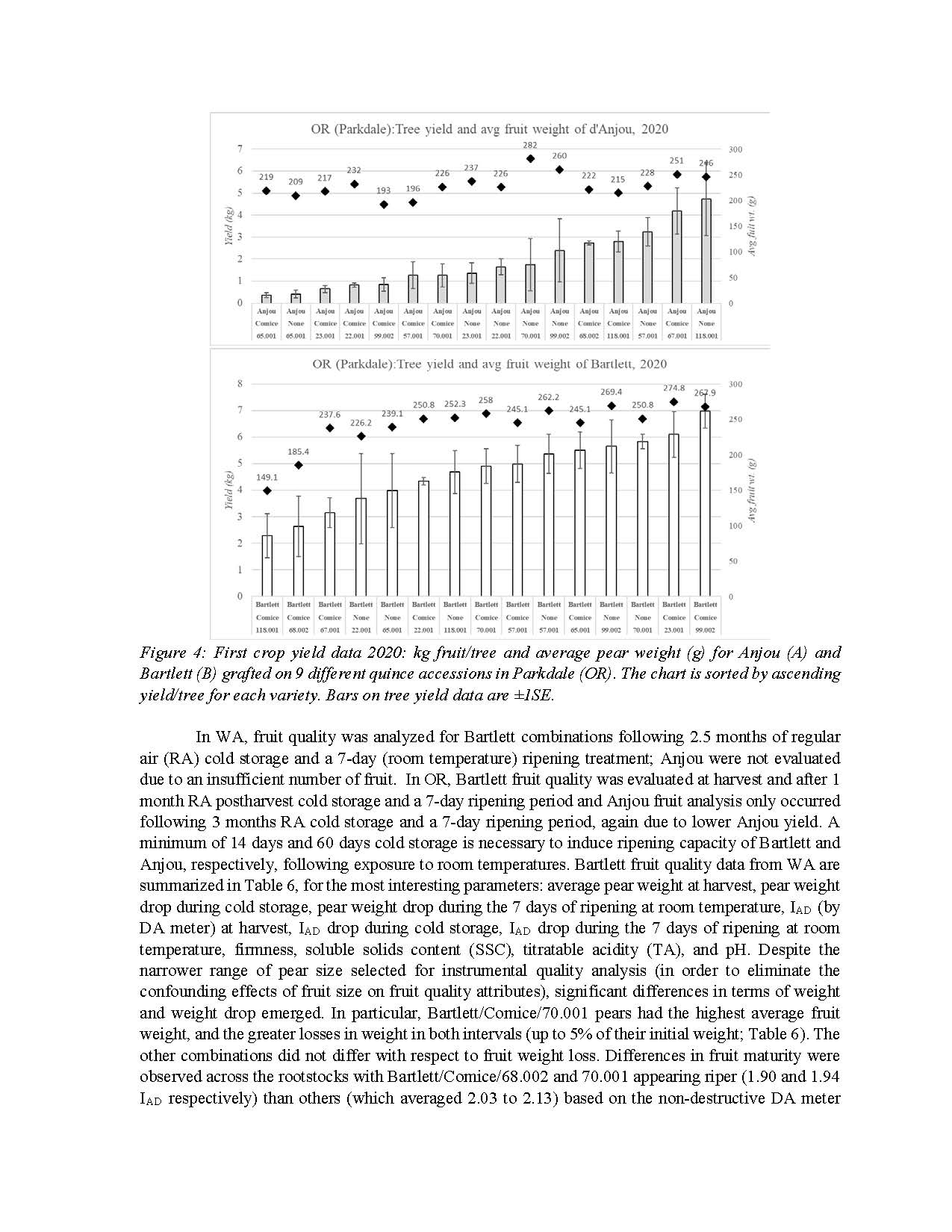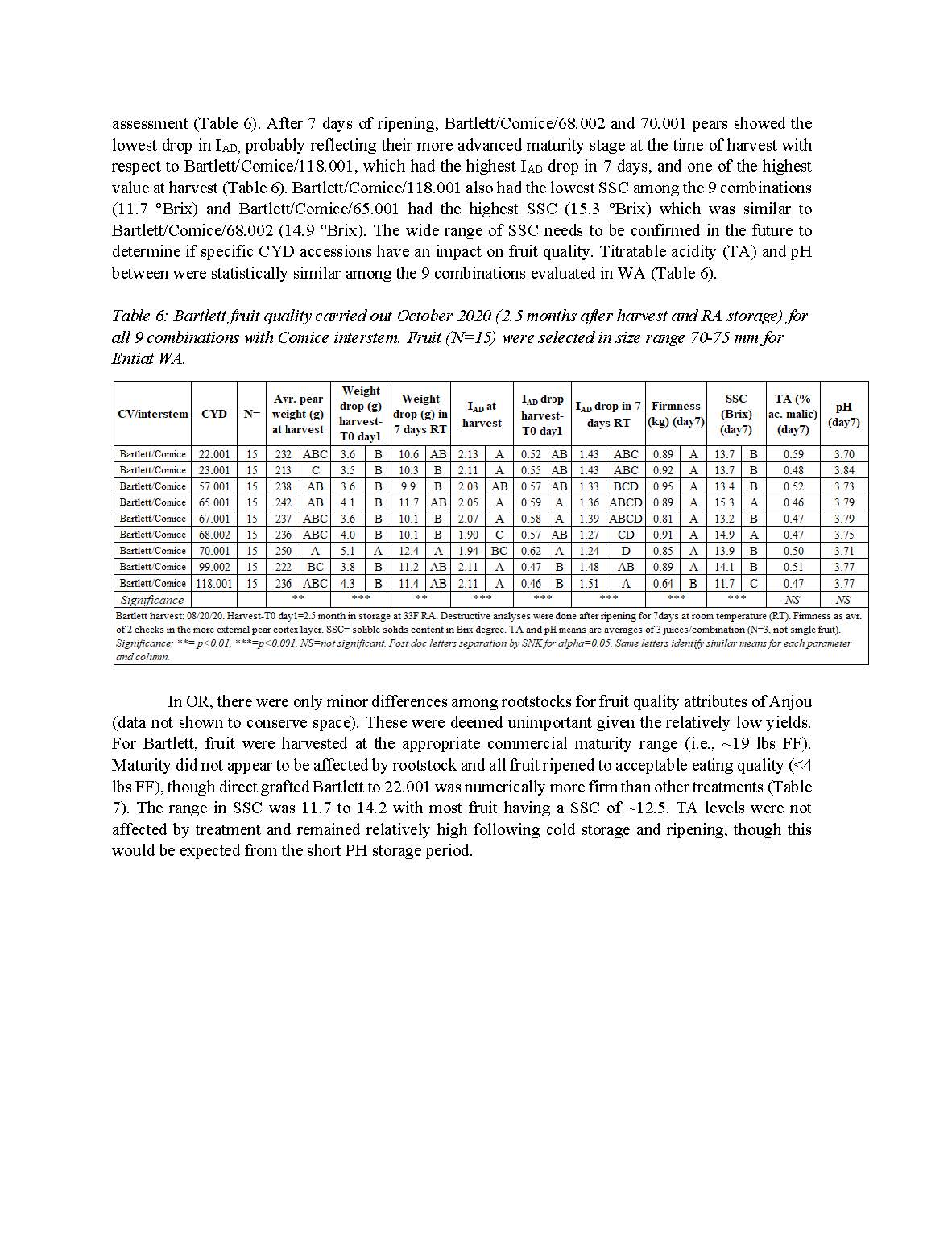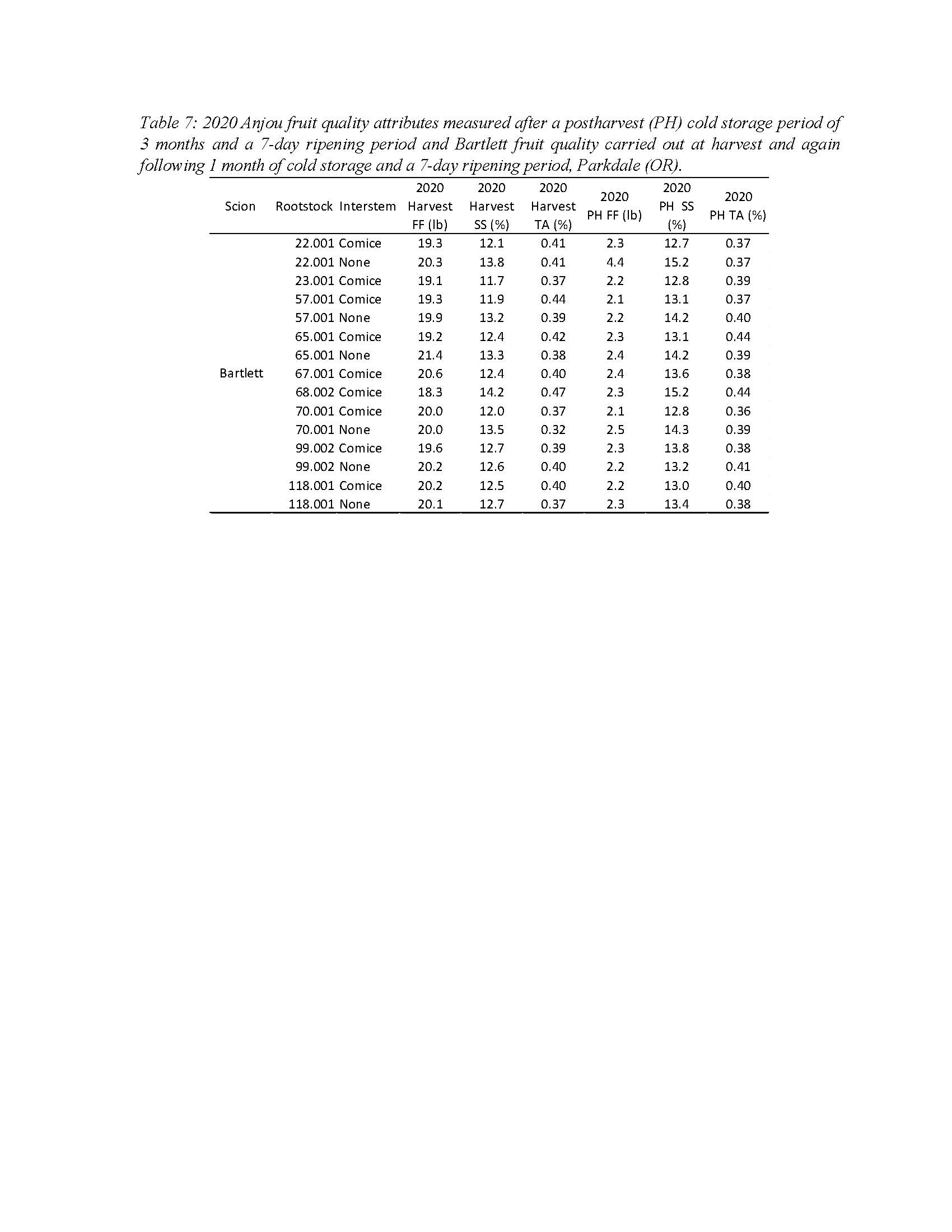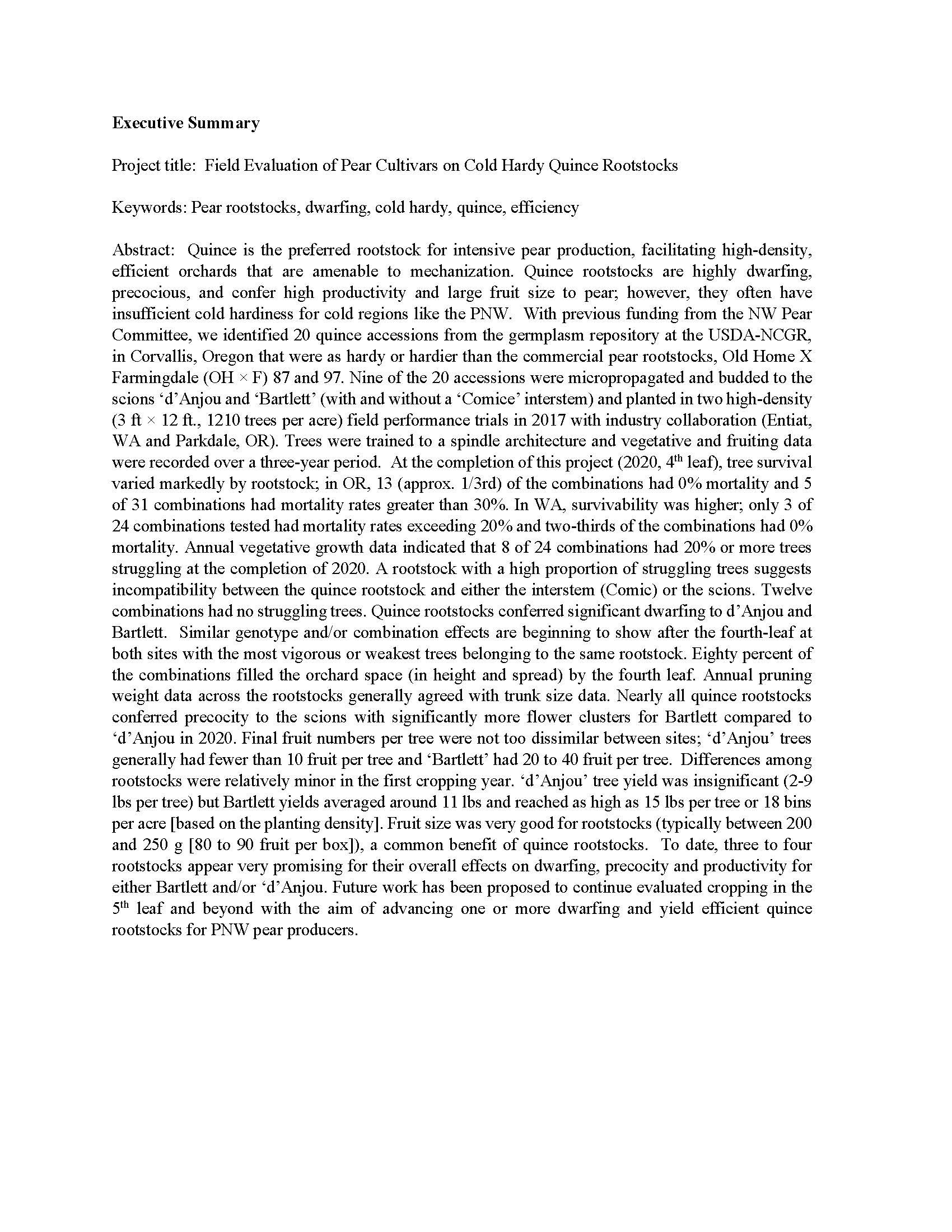Field Evaluation of Pear Cultivars on Cold Hardy Quince Rootstocks
Author: Todd Einhorn, Stefano Musacchi
Published: 2021
Summary: Quince is the preferred rootstock for intensive pear production, facilitating high-density, efficient orchards that are amenable to mechanization. Quince rootstocks are highly dwarfing, precocious, and confer high productivity and large fruit size to pear; however, they often have insufficient cold hardiness for cold regions like the PNW. With previous funding from the NW Pear Committee, we identified 20 quince accessions from the germplasm repository at the USDA-NCGR, in Corvallis, Oregon that were as hardy or hardier than the commercial pear rootstocks, Old Home X Farmingdale (OH × F) 87 and 97. Nine of the 20 accessions were micropropagated and budded to the scions ‘d’Anjou and ‘Bartlett’ (with and without a ‘Comice’ interstem) and planted in two high-density (3 ft × 12 ft., 1210 trees per acre) field performance trials in 2017 with industry collaboration (Entiat, WA and Parkdale, OR). Trees were trained to a spindle architecture and vegetative and fruiting data were recorded over a three-year period. At the completion of this project (2020, 4th leaf), tree survival varied markedly by rootstock; in OR, 13 (approx. 1/3rd) of the combinations had 0% mortality and 5 of 31 combinations had mortality rates greater than 30%. In WA, survivability was higher; only 3 of 24 combinations tested had mortality rates exceeding 20% and two-thirds of the combinations had 0% mortality. Annual vegetative growth data indicated that 8 of 24 combinations had 20% or more trees struggling at the completion of 2020. A rootstock with a high proportion of struggling trees suggests incompatibility between the quince rootstock and either the interstem (Comic) or the scions. Twelve combinations had no struggling trees. Quince rootstocks conferred significant dwarfing to d’Anjou and Bartlett. Similar genotype and/or combination effects are beginning to show after the fourth-leaf at both sites with the most vigorous or weakest trees belonging to the same rootstock. Eighty percent of the combinations filled the orchard space (in height and spread) by the fourth leaf. Annual pruning weight data across the rootstocks generally agreed with trunk size data. Nearly all quince rootstocks conferred precocity to the scions with significantly more flower clusters for Bartlett compared to ‘d’Anjou in 2020. Final fruit numbers per tree were not too dissimilar between sites; ‘d’Anjou’ trees generally had fewer than 10 fruit per tree and ‘Bartlett’ had 20 to 40 fruit per tree. Differences among rootstocks were relatively minor in the first cropping year. ‘d’Anjou’ tree yield was insignificant (2-9 lbs per tree) but Bartlett yields averaged around 11 lbs and reached as high as 15 lbs per tree or 18 bins per acre [based on the planting density]. Fruit size was very good for rootstocks (typically between 200 and 250 g [80 to 90 fruit per box]), a common benefit of quince rootstocks. To date, three to four rootstocks appear very promising for their overall effects on dwarfing, precocity and productivity for either Bartlett and/or ‘d’Anjou. Future work has been proposed to continue evaluated cropping in the 5th leaf and beyond with the aim of advancing one or more dwarfing and yield efficient quince rootstocks for PNW pear producers.
Keywords:

